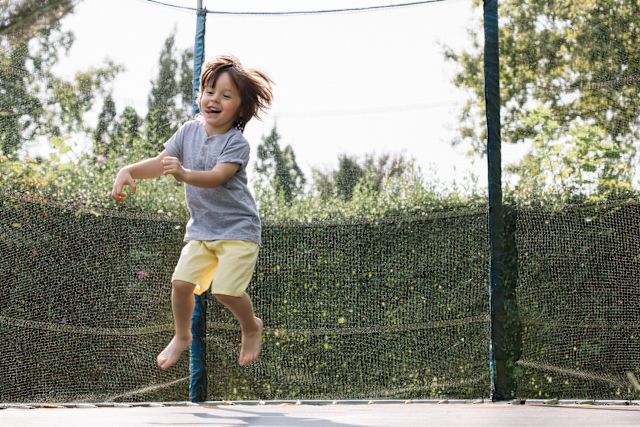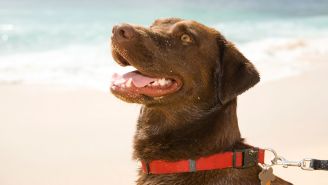Updated on April 22, 2025.
Whether you’re grilling on the deck, enjoying a dip in the pool, or keeping up with the lawn and garden, warmer weather comes with its own set of fun activities for family and friends to enjoy. Try these backyard safety tips to help protect you and your loved ones outdoors.
Grills
Gas grills cause thousands of home fires each year, according to the National Fire Protection Association. To protect your home:
- Make sure your grill is in good working order.
- Don’t grill on a flammable surface.
- Avoid grilling too close to the house.
- Close grill vents and douse coals with water when you’re finished cooking.
- When using a propane grill, check the tank for leaks before use.
- Keep kids and pets at least 3 feet away from the grill, backyard fire pit or stove, or other outdoor cooking equipment. (Installing a safety fence may help.)
- Never leave your grill unattended.
Backyard playground equipment
Falls are the leading cause of childhood injury. To help keep kids safe on swing sets, slides, tree houses, and other structures:
- Follow installation instructions carefully when setting up swing sets, climbing structures, and slides.
- Avoid equipment made from pressure-treated wood, which can contain potentially hazardous chemicals.
- Lay a soft surface of wood chips or rubber underneath play areas.
- Keep pet leashes, ropes, jump ropes, and clotheslines unattached from play sets to help prevent strangulation.
- Never leave toddlers and young children alone on play structures.
Trampolines
Tens of thousands of children in the United States are injured on trampolines annually. If you have a trampoline or plan to get one, make sure to:
- Supervise children at all times.
- Install a safety net around the structure.
- Cover supporting springs, bars, and landing areas in protective padding.
- Enforce trampoline safety rules, including the most important rule of all: only one jumper at a time.
- Keep the trampoline far away from garage doors, trees, and fences.
- Tell your children not to jump onto the trampoline from high places, like rooftops, trees, and cars. Also caution them to avoid flips, which are a common cause of injuries.
- Avoid trampoline use during periods of high winds.
- Check your equipment regularly for tears and other defects.
Children under age 6 shouldn’t use trampolines, according to guidance by the American Academy of Pediatrics, as they’re at the highest risk for injury.
Porches, decks, and fences
Young children can fall through or become trapped if railing slats are spaced too far apart on outdoor living structures. To keep them safe:
- Use safety netting to line railings and fences, or add lattice or extra boards to close up gaps.
- Check fences for loose hardware, splinters, sharp edges, and missing slats.
- Make sure slats or deck railings aren’t more than 4 inches wide.
- For young children, install childproof gates at the top and bottom of stairs.
- Keep outdoor furniture away from railings so children don’t climb onto it and fall over the railing.
Lawn and garden items
Saws, pruning shears, mowers, and power tools can be especially dangerous for children. Beware of potentially dangerous plants on the property, as well. So:
- Wear long pants and safety goggles when you mow grass or trim bushes. Avoid mowing in sandals or barefoot. Wear comfortable, sturdy shoes instead.
- Store gardening equipment in a shed or garage with a door, secured with a lock or childproof latch.
- Avoid taking your children on a lawnmower as a passenger.
- Inspect your power tools for damage like frayed cords before using.
- Keep poisonous plants away from children and pets and teach them not to eat wild berries, flowers, or other plants.
Pools and hot tubs
Water safety should be a top priority for everyone, whether renting or owning. Be sure to:
- Supervise kids at all times while they’re in a pool, wading pool, or hot tub.
- Put a fence around pools with a self-closing and self-latching gate so that children who wander outside don’t fall in.
- Cover hot tubs with a hard cover that locks while not in use.
- Take a phone outside to the pool with you in case you need to call emergency services.
For added safety, the AAP recommends all kids and parents take swim lessons.
Chemicals
Many chemicals commonly found in yards and sheds can be poisonous if swallowed. Remember to:
- Store fertilizers, weed killers, swimming pool cleansers, disinfectants, fuels for grills and stoves, and other toxic chemicals out of children’s reach.
- Keep lids on chemicals tight to prevent spillage if they fall.
- Keep children off the lawn for 48 hours after treatment with a pesticide or fertilizer.
- If you use herbicides and pesticides in your garden, consider trying the organic versions to help keep your family safe.
Even if you follow best safety practices, accidents can happen. Be prepared. Along with a first aid kit, keep important numbers handy, such as the Poison Control Center (1-800-222-1222). Supervising your children as they play and talking to them about outdoor and equipment safety rules can also help protect against injuries. For additional assistance, the First Aid app from the American Red Cross provides easy-to-follow first aid videos plus instant access to 911 from anywhere in the world—including your own backyard.







